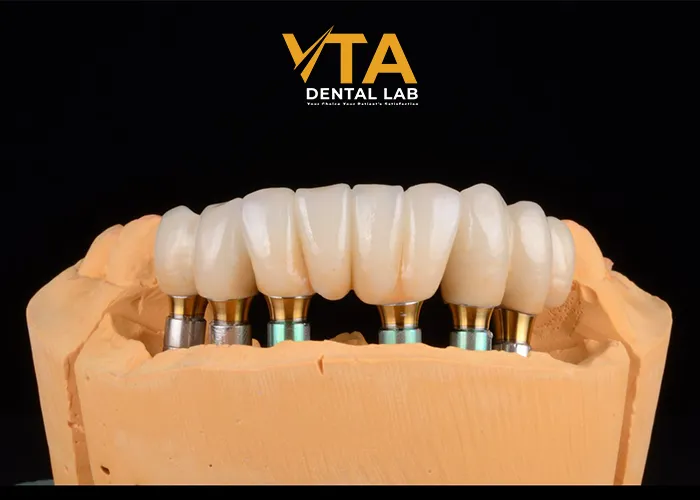Dental Implant Bridge: The Optimal Prosthetic Solution
What is a Dental Implant Bridge?
A Dental Implant Bridge is a dental restoration solution similar to a traditional bridge, but the supporting teeth are anchored on dental implants instead of natural teeth. It is commonly used when two or more consecutive teeth are missing. Specifically, it consists of:
Implant: One or more metal posts (usually titanium) implanted into the jawbone, serving as the tooth’s root.
Abutment: This component connects the implant to the bridge, helping to transfer forces from the bridge to the implant.
Bridge: This refers to the prosthetic teeth attached to the abutments, which can replace two or more missing teeth depending on the number of teeth lost. The crowns in the middle that do not require implants are called “pontic”, while the crowns at both ends of the bridge affixed to the implants are referred to as retainer crowns.
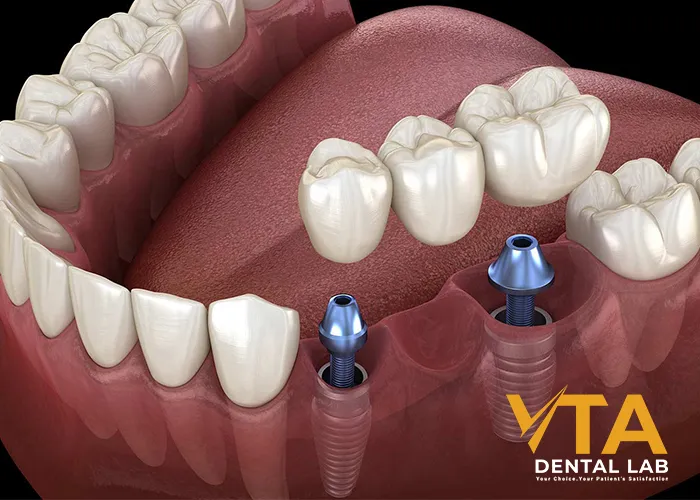
Types Of Dental Implant Bridge
There are several types of dental implant bridges, but generally, based on the number of missing teeth, there are two common types as follows:
Implant-Supported Bridge
An Implant-Supported Bridge consists of one or more artificial teeth in the middle (also known as pontics) and is surrounded by retainer crowns attached to dental implants that are embedded in the jawbone. An Implant-Supported Bridge is indicated in cases where a patient has lost two or more teeth. This is a popular choice for multiple tooth loss because it helps distribute chewing forces more evenly, providing patients with a permanent, fixed solution that optimizes function.
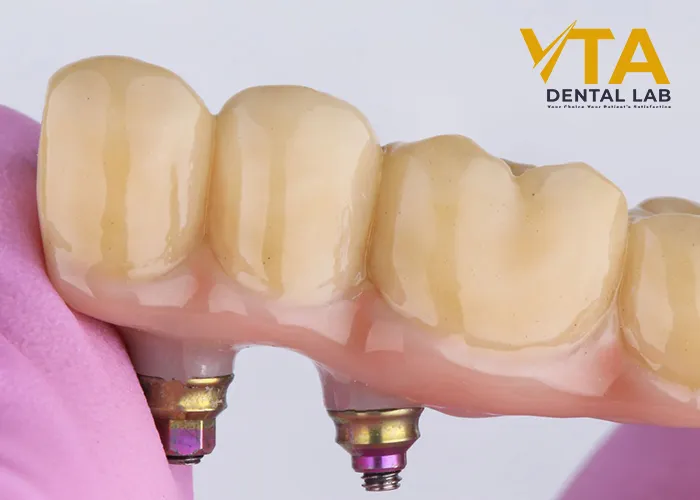
Implant-Supported Bridge
Full Arch Implant-Supported Bridge
This method uses four or six implant posts inserted into the jawbone to support a complete dental bridge, replacing all teeth in one arch. It is indicated in cases of total tooth loss in either the upper or lower. This revolutionary implant technique for cases of complete tooth loss retains most of the advantages of traditional implants while minimizing the number of implants needed, reducing treatment time and costs for patients.
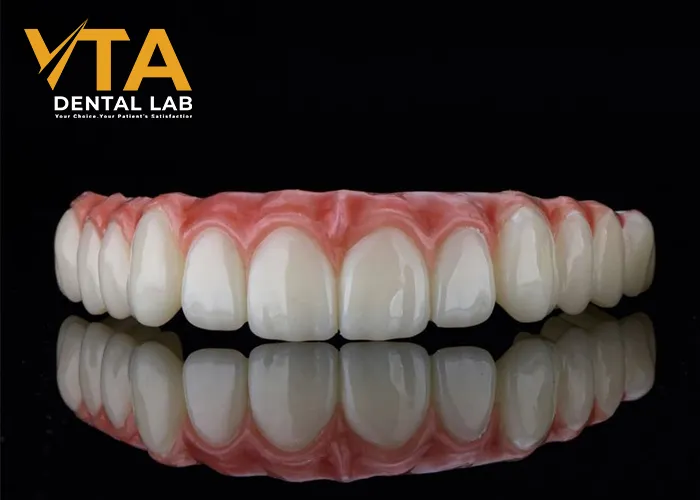
Full Arch Implant-Supported Bridge
Dental Implant Bridge Workflows
Consultation and Treatment Plan
The dentist will assess your oral health, bone density, and medical history through X-ray or CBCT results. After that, they will develop a treatment plan based on your condition. This plan will detail all procedures, costs, and estimated timeframes, allowing patients to confidently make decisions based on their personal needs.

Consultation and Treatment Plan
Implant Placement
After determining the grafting area, the dentist will proceed with anesthesia to minimize pain. Then, the dentist will place the implant posts and healing caps will be placed on these implants to allow the soft tissue (gums) to heal around the graft site. This process will take about 3 to 6 months, allowing the implants to integrate with the jawbone.
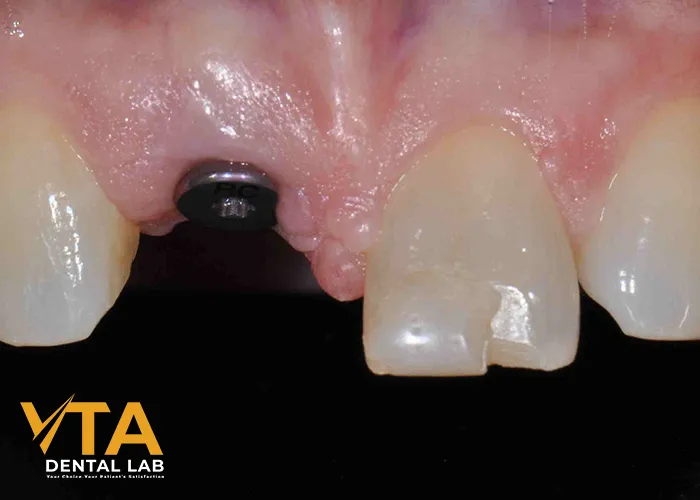
Implant Placement
Placement of Abutments and Temporary Teeth
At this appointment, the healing caps will be replaced with abutments, which will allow the gums to form a “collar” around the base of the crown area. After that, a temporary tooth (made of composite, a partial denture, or suck-down retainer) will be provided on the healing abutments for the patient to wear throughout the remaining healing process.
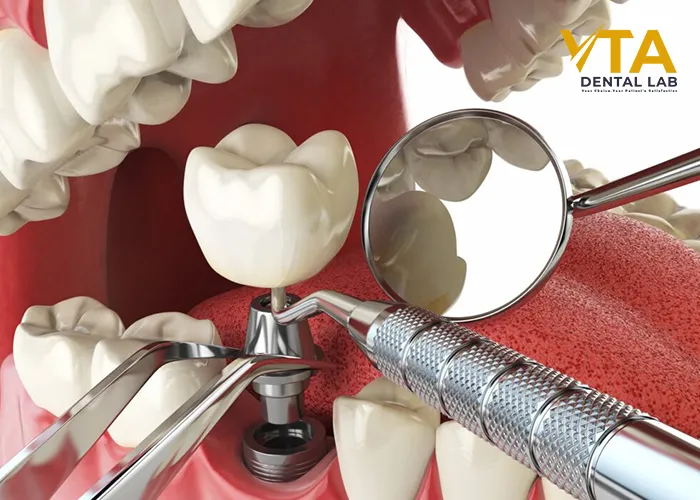
Placement of Abutments and Temporary Teeth
Impression
After the healing process, the dentist will schedule an appointment to take dental impressions. The abutments and temporary teeth will be removed for a short time so that the dentist can take the impressions (using either traditional impression trays or a 3D scanner). These impressions will be sent to the dental laboratory to create the final abutments and porcelain bridge. Finally, the abutments and temporary teeth will be reattached to their original positions while waiting for the crown to be completed.
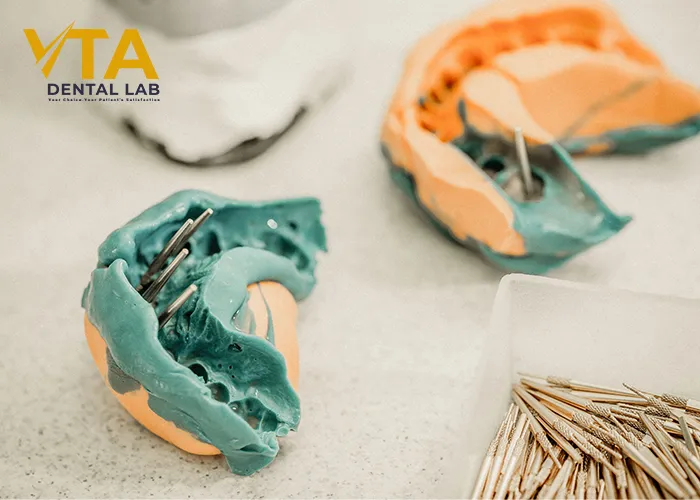
Impression
Cementation
After about 1-2 weeks, when your porcelain bridge is complete, the dentist will securely attach the final bridge to the abutments, making any necessary adjustments to ensure comfort and optimal function. Finally, you will regain your natural smile.
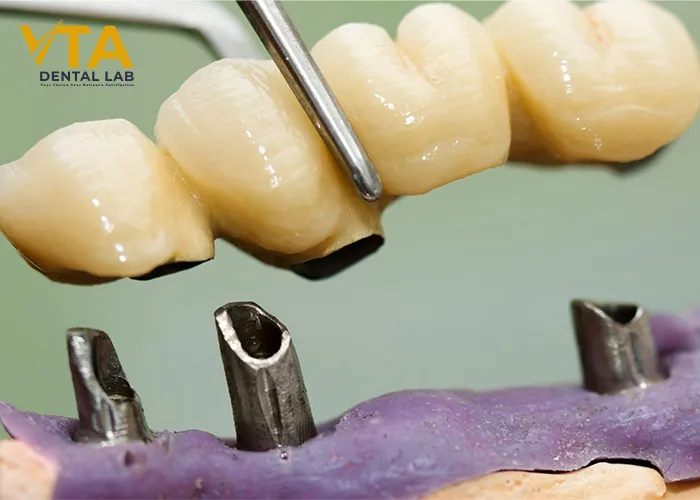
Cementation
What Are The Benefits Of Dental Implant Bridge?
Dental Implant bridges offer various benefits and can significantly improve upon traditional bridges or removable dentures. They provide an optimal long-term solution for cases of multiple tooth loss without the need for excessive implant placement. Dental Implant bridges look and feel like natural teeth and do not require any special care, leading to significant improvements in chewing, speaking, and appearance. Below are some of the greatest benefits that dental implant bridges provide:
- A long-term solution that helps preserve and maintain the structure of surrounding teeth, a dental implant bridge can last for many years with proper care and maintenance.
- Help preserve the surrounding jawbone by providing stimulation, preventing bone loss that often occurs when teeth are missing.
- Providing stability and aesthetics similar to natural teeth, it restores functionality, allowing patients to eat, speak, and smile with confidence.
- A time and cost-effective treatment method compared to Dental Implant Bridge, it offers superior results compared to traditional bridges or removable dentures.
- Dental Implant Bridge is easy to care for, and you can maintain it just like natural teeth, supporting oral health.
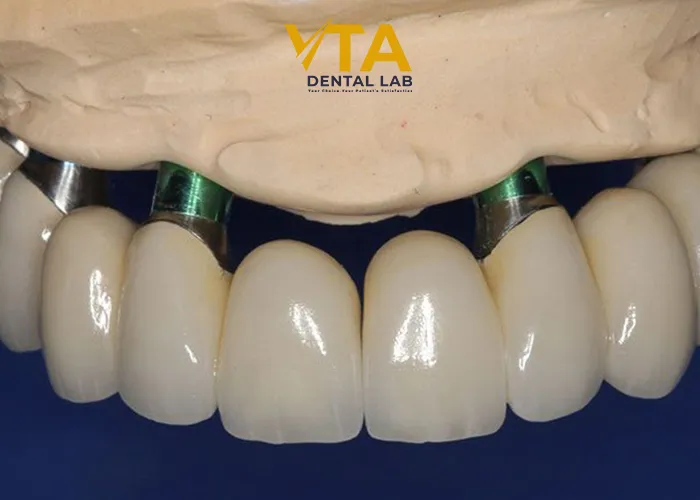
Conclusion
If you are missing a lot of or all your teeth in one arch or need to have them all removed, if have enough bone for 2-4-6 implants, if you do not want to wear removable teeth, and if you can afford this treatment, this is an excellent way to restore your mouth to a fully functional, esthetically beautiful state.
As a full-service laboratory, VTA Dental Lab is confident in providing high-quality Dental Implant Bridge products on time. This is a way to streamline your practice while offering your patients the best possible experience. please feel free to contact us via email: az@vtadentallab.com or ca@vtadentallab.com
